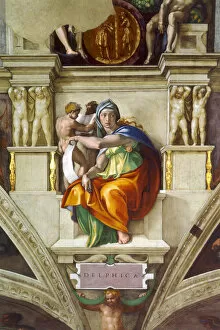Cassandra Collection (page 2)
Cassandra, a name that echoes through the annals of history, carries with it tales of tragedy and prophecy
All Professionally Made to Order for Quick Shipping
Cassandra, a name that echoes through the annals of history, carries with it tales of tragedy and prophecy. From the Rape at the Altar of Athena to her predictions about the downfall of Troy, this ancient figure has captivated minds for centuries. In 330 BC, Cassandra's story became entwined with the Trojan War, as she foresaw its catastrophic end. Despite her warnings, her prophecies fell on deaf ears and were dismissed by those around her. The Roman-Pompeian wall painting depicting Ajax the Lesser dragging Cassandra away from the Xoanon serves as a haunting reminder of her fate. Centuries later in 1731, artist Bernard Picart immortalized Cassandra once again in his artwork portraying her prophetic abilities. Her words echoed through time as she foretold Troy's demise amidst intricate mythological tapestries and engravings. But not all associations with it can tinged with sorrow. In more recent times, we see Rebecca Adlington and Cassandra Patten making waves in their respective fields - swimming champions who embody strength and determination. The mention of Calypso alongside Campus Martius reminds us that even within mythology itself, Cassandra was not alone. She shared space with Charites (the Graces), further emphasizing her connection to divine forces. From an attic red-figure cup showcasing scenes from the Trojan War to frescoes adorning Pompeii's House of Menander – these remnants serve as glimpses into a world where Cassandra's presence loomed large. Beyond artistry lies sport; Field Dog Trials at Shrewsbury offer a glimpse into how different cultures have embraced canine companionship throughout history. And while English huntswomen gracefully leaped over fences sidesaddle during their pursuits, one cannot help but wonder if they ever pondered upon Cassandran tragedies or victories themselves.





























